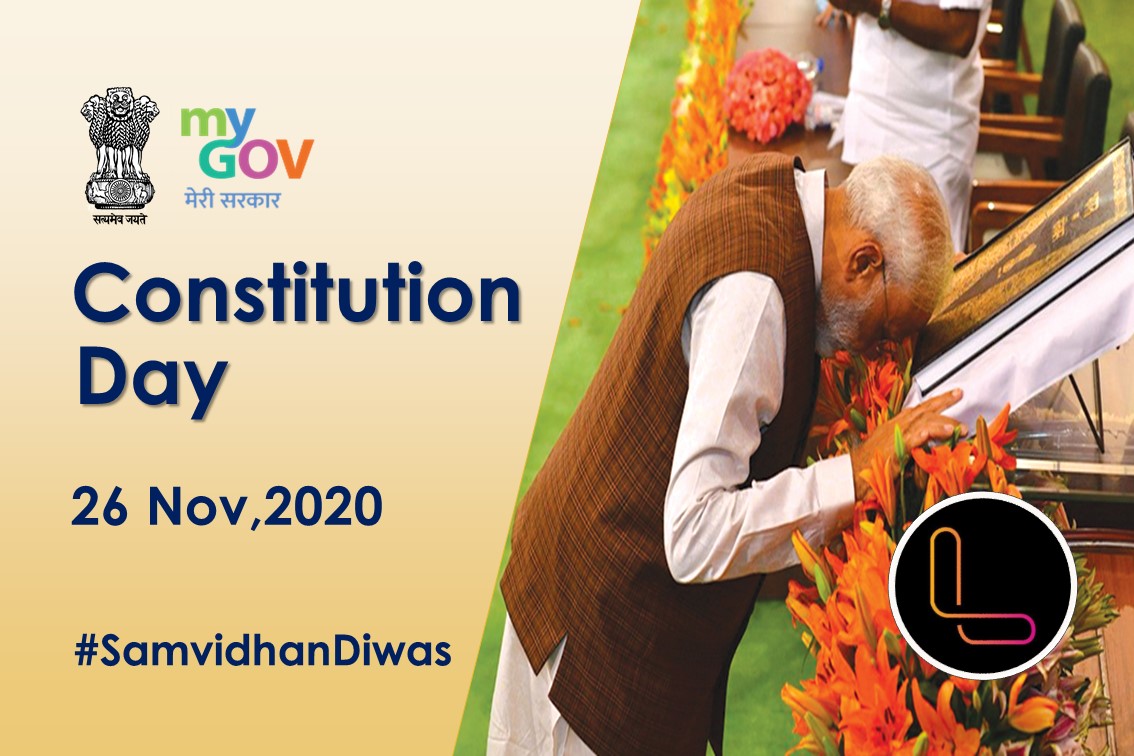
26/11/20 16:39 PM IST


What is the Constitution of India?
The Constitution is a set of written principles and precedents of the Government of India that frames fundamental political principles, procedures, rights, directive principles, restrictions, and duties of the government and the citizens of the country.
In a democracy, the Constitution is a sacred text for the Government- It lays a strong foundation for a parliamentary democracy to function. The Constitution is the supreme law of a Nation.
India is the largest democracy in the world, and its Constitution serves as a guiding light for it to function smoothly and vibrantly. The Constitution provides for a Parliamentary form of government, which is federal in structure with certain unitary features. The constitutional head of the Executive of the Union is the President.
It is divided into 12 Schedules, which elaborates government policy or rules in relation to specific Articles of the Constitution. Each Schedule in this section is tagged with the corresponding Article(s) for ease of understanding.The Articles are grouped into 22 different parts, which reflects how they are organized in the text of the Constitution of India
Why was constitution Necessary?
India was under rule of British when it got its freedom prior to them Mughals were ruling over India. It was divided in more than 500 provinces so its unification was important. Once this was achieved a common set of rules and regulations were required for proper distribution of power, hence constitution makers decided to work on it by forming committees.
As we know a country is run by the government, judicial bodies, its people, and most importantly by the Constitution. The constitution serves as the backbone of the country. Without it, the Law and Jurisdiction will not hold up and fall apart in no time.
A chief aim of the Constitution as drafted by the Convention was to create a government with enough power to act on a national level, but without so much power that fundamental rights would be at risk. One way that this was accomplished was to separate the power of government into three branches.
When did constitution framing started?
Ancient republics or ‘Janpadas’ such as Vaishali, Kapilvastu, Mithila etc. date back to 600 BC. Eminent historian Dr K.P. Jayaswal believes the concept of republic in ancient India is older than of the Roman or Greek republic system of Government.
The Constitution of India was framed by a Constituent Assembly set up under the Cabinet Mission Plan of 1946. The Assembly consisted of 389 members representing provinces (292), states (93), the Chief Commissioner Provinces (3) and Baluchistan (1).
The Assembly held its first meeting on December 9, 1946, and elected Dr. Sachhidanand Sinha, the oldest member of the Assembly as the Provisional President. On December 11, 1946, the Assembly elected Dr Rajendra Prasad as its permanent Chairman.
The strength of the Assembly was reduced to 299 (229 representing the provinces and 70 representing the states) following withdrawal of the Muslim League members after the partition of the country.
From where constitution framers borrowed the idea?
The Constitution of India was not an original document.
The framers of the Constitution freely borrowed the good features of other constitutions. However, while adopting those features, they made necessary modification for its suitability to the Indian conditions and avoided their defects. The Constitutions which exercised profound influence on the Indian Constitution were that of UK, USA, Ireland, Canada etc.
The parliamentary system of government, rule of law, law-making procedure and single citizenship were borrowed from the British Constitution.
Who is considered the father of constitution?
Dr. B. R. ambedkar is regarded as the father of Indian Constitution.
The Indian Constitution and its drafting process are often seen as synonymous with Ambedkar. He became a key figure in India’s constitution-making process due to the offices he held and his interventions and speeches in the Assembly. He was the Chairman of the Assembly’s most crucial committee – the Drafting Committee – and was also a member of other important Comittee.
As chairman of the Drafting Committee, he had to defend the Draft Constitution which it prepared, and therefore intervened in nearly every debate. Ambedkar was appointed as the first Law Minister of independent India in 1947. Ambedkar’s ideas as presented in the Hilton Young Commission served as an inspiration behind the creation of the Reserve Bank of India
How does a constitution help in the working of a Nation?
One of the major problems for any country is that the distribution of power especially in federal type of government and if the power is not divided properly it leads to civil uproars and various issues that lead to the economic and social downfall of the country.
As for the Indian Constitution, it distributes the power horizontally throughout the three major institutional bodies of the Indian Jurisdiction. They are, The Parliament, The executive, and The Judiciary. Where The Parliament acts as the supreme body and all the bills and amendments passed down with their consent, which will help you to understand the working of the constitution and will help you to conclude why the constitution is important.
For formation or amendment of laws the bill has to be first presented in either of the 2 houses and both the houses should give their consent which is finally conformed by President for any law to added or amended in Indian constitution.

17 Sep
'Dehradun and several other districts in Uttarakhand have experienced very heavy rainfall over the past few days, triggering landslides in multiple areas and causing rivers to swel
Read More
08 Sep
'The Rajasthan Coaching Centres (Control and Regulation) Bill, 2025, is a significant piece of legislation passed by the Rajasthan Assembly to regulate and oversee the state's burg
Read More
28 Aug
'Recently, the Indian Space Research Organisation (ISRO) successfully carried out its first Integrated Air Drop Test (IADT-1), a crucial milestone in the preparation for the countr
Read More